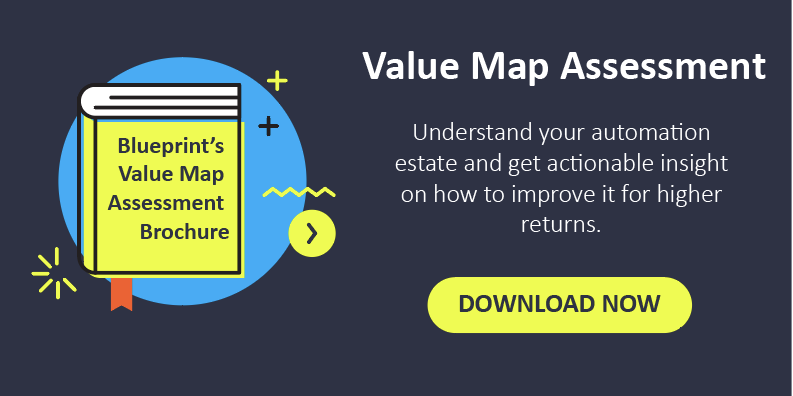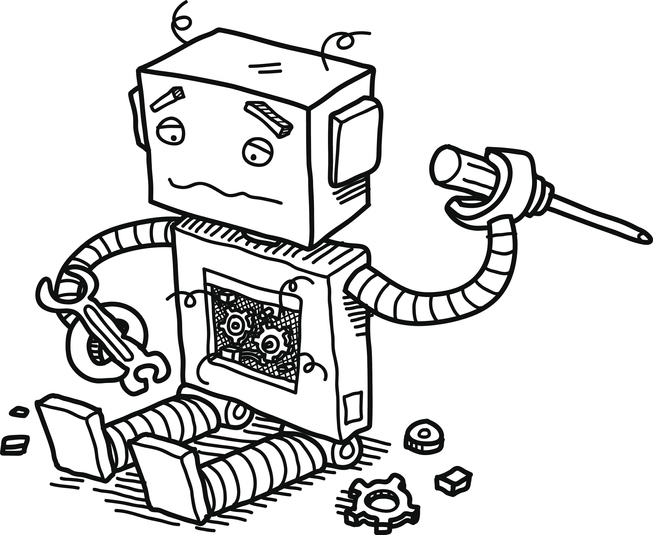7 Secrets to Scaling Robotic Process Automation (RPA)
Robotic Process Automation (RPA) is revolutionizing work-related processes and what the enterprise workforce dedicates their time to. Enterprises everywhere have a considerable pool of talent performing mechanical, repetitive tasks daily.
Robotic Process Automation is the change agent technology that automates these mundane, mechanical tasks with the added benefit of executing common processes with higher quality, more reliability, and yielding better outcomes. These welcomed consequences of automating business processes with robots are simple by-products of eliminating errors introduced by human interaction and management, making common processes more efficient and productive.
Arguably the greatest benefit of adopting RPA technology is that it allows your talent to devote its attention and skills to higher-value tasks, removing the burden of performing mechanical operations that, while necessary, contribute little to the enterprise's growth and prosperity.
With stark and undeniable benefits, it's no surprise that – according to Gartner – RPA is the fastest-growing enterprise software category. Yet even with RPA's aggressive market growth, some enterprises have yet to implement Robotic Process Automation, and those that have, have not succeeded in scaling the RPA technology they have adopted across the enterprise. According to a report published by HFS Research in conjunction with KPMG, the surprising reality is that RPA is the least-scaled Intelligence Automation (IA) technology across the enterprise.
The Challenges to Scaling RPA Across the Enterprise
Several factors have hindered organizations looking to scale the enterprise RPA solutions they've adopted. HFS Research and KPMG make the case that a lack of vision or the non-existence of an enterprise-wide strategy is a formidable obstacle that impedes the ability to scale.
In the same report, the absence of the necessary talent to execute the automation built in the software RPA vendors provide serves as another barrier to scale Robotic Process Automation. While a lot of the RPA service providers position themselves as plug-and-play tools the average business persona can easily handle, the reality is that most of the time, they require experienced developers to support and execute process automation.
One of the more tangible blockers afflicting enterprises trying to scale RPA is that they haven't invested any time optimizing the processes they want to automate. A common assumption is that integrating Robotic Process Automation technology through an RPA vendor is enough to quickly realize the ROI or time-to-benefit on all the processes that have been automated.
Unfortunately, enterprises quickly realize that critical analysis and understanding of what they want to achieve is vital for a long-term and continuous reward.
Seven Secrets to Successfully Scaling RPA Across the Enterprise
1. Optimize Your Processes Before You Automate Them
In many cases, when enterprises take the plunge to automate their processes with robots, one form of waste is replaced with another. With the aggressive push to adopt RPA technology, enterprises are quick to automate their existing processes without taking the time to analyze them or identify where there might be room for improvement.
Investing in RPA technology isn't just an opportunity to automate your mechanical processes and allow your talent to drive higher-value tasks; it's also a key opportunity to drive process improvement that will, in turn, will enable the enterprise to scale RPA.
Failing to see the inefficiencies or waste in a process before automating it with RPA is an invitation for failure in and of itself.
2. Consider Process Mining Tools to Improve Your Processes
Process mining – essentially, data mining that identifies patterns in event log data – can considerably aid enterprises in the effort to optimize their processes before automation.
Enterprises have a myriad of business processes that can deceptively seem uniform but, at a second glance, can vary considerably, complicating the effort to automate them with a robot.
Consider something as seemingly simple as processing order forms to pay your suppliers and vendors—a task normally undertaken by your accounts payable team. At a multinational corporation, trying to improve and automate order form processing can quickly become mired in a tangle of multiple conditions: How are different currencies treated? Sales tax across global providers? What's the typical process that someone from accounts payable follows? What steps need to be manual? Where are errors usually made?
Mapping out the steps in a process to truly identify and visualize it enhances automation and facilitates its ability to scale across the enterprise. And it's once you have this map—a visual of your process, that you can then optimize it with Blueprint.
3. Establish an RPA Center of Excellence (CoE) Where the Business and IT Share Ownership to Scale RPA
Siloed RPA ownership is one of the main reasons RPA projects are failing and unable to scale. When IT has independent ownership of RPA, they're disconnected from the business and don't respond quickly enough to business needs.
When the Business solely owns automation, they don't understand the technical limitations of RPA, leading to poor process selection and mountains of maintenance and bot errors down the road.
The only way to enable RPA at scale is to establish shared ownership between IT and business; this can present itself as an RPA Center of Excellence (CoE). A CoE allows all stakeholders to bring their collective expertise to the table to optimize process selection, prioritization, and RPA development. The business contributes their process knowledge and higher-level business objectives. At the same time, IT provides the technical expertise to ensure the right processes are being automated that won't lead to crippling maintenance and outages later on.
4. Ditch the Process Design Document (PDD)
Process Design Documents (PDD) are an ineffective method to design, plan, and communicate RPA work. They're generally massive documents that are very time-consuming to put together and still don't capture the precise guidance and precision needed to develop bots that won't break or need constant maintenance. They make it easy to miss requirements during documentation and even more accessible for the developer to overlook them when flipping through these heavy, unclear docs.
To enable RPA at enterprise scale, a unique, digital format is needed that captures all dependencies and the context needed to drive high-quality RPA development that leads to more resilient bots.
5. Connect Your Processes to All Dependencies and Higher-Level Business Objectives
To drive high-quality bot development that enables RPA at scale, you must connect all dependencies and critical information like non-functionals, regulations, legacy systems, business objectives, etc. to your to-be processes for automation.
By tracing all of this critical information to your processes for automation, you enable:
- Better compliance and easier audits
- Tangible evidence of how automation is contributing to higher-level enterprise goals
- Higher-quality RPA development that accounts for all dependencies leading to fewer maintenance issues and RPA downtime
- More effective RPA governance
- Proactive change management
6. Transform Your Change Management Strategy From Reactive to Proactive
The majority of automation teams today deal with change reactively. Usually, a bot throws an error and breaks because a UI (user interface) element in a system the automated process interacts with has changed, or a regulatory change has been missed. Teams scramble to investigate the issue leading to prolonged RPA downtime and a cyclical break-fix approach that's just not conducive to RPA at scale.
By connecting all critical information to your to-be processes for automation, effective, proactive change management is enabled. Anytime a change is introduced, an impact analysis can be performed smoothly and quickly, identifying which processes are impacted and where opening the door to proactive change management that limits RPA downtime and drives RPA at scale.
7. Monitor and Track Your Automation Estate with Rich Analytics
A big pain point many organizations face in their RPA initiatives is that they don't know what they actually have in their automation estates, which automated processes are delivering value, and which ones aren't—contributing to an inflated total cost of ownership.
A key to scaling automation practices is always maintaining full visibility on key automation metrics. These metrics are not limited to important operational data like utilization, last time run, errors, etc. but also include process complexity and the systems and applications the automation interacts with.
On average, 30% of automation estates are redundant. That type of redundancy keeps costs high and limits added investment that would be dedicated to scaling.
Not only do Blueprint's automation dashboards and analytics provide the visibility and insight needed to optimize automation estates, but we also provide Value Map Assessments that analyze your entire automation estate to uncover where there are redundancies, how they can be removed, where processes are unnecessarily complex, and which automations can be retired to reduce costs and boost returns.
Learn more about how you can reduce your total cost of ownership while increasing ROI by downloading the Value Map Assessment brochure.
Share this
Recent Stories

Why Process Design Documents (PDD) Limit RPA at Scale

How an Agile Approach to Automation Can Deliver RPA at Scale



